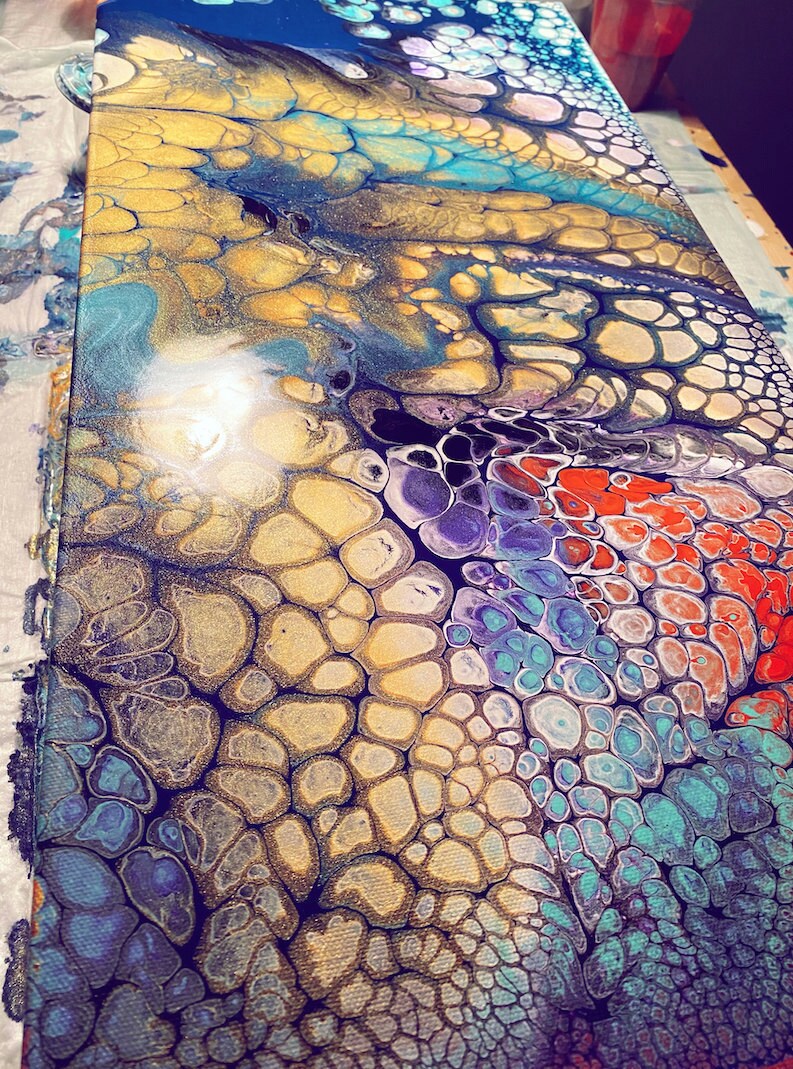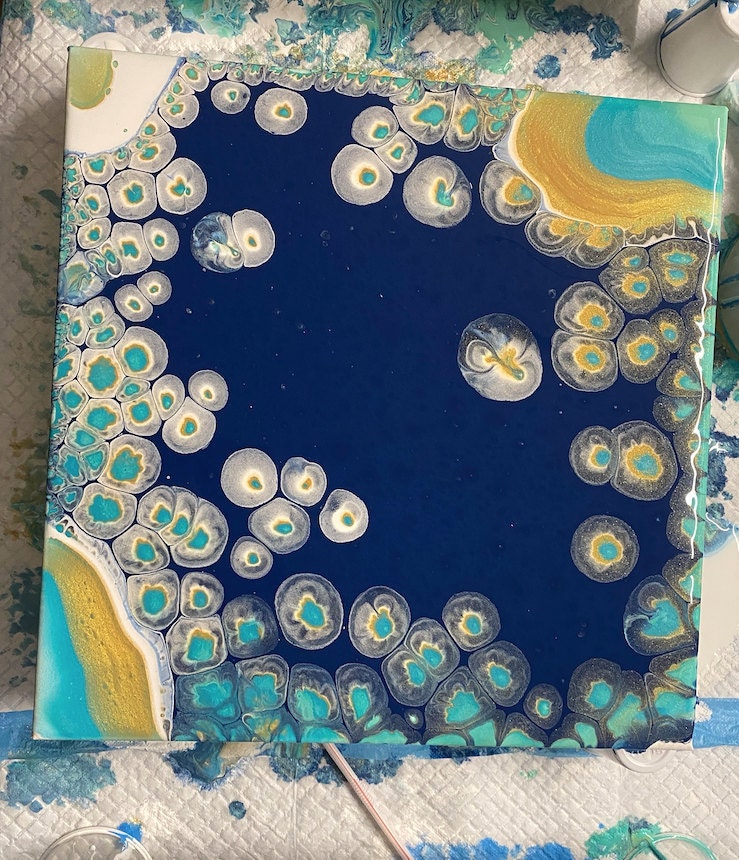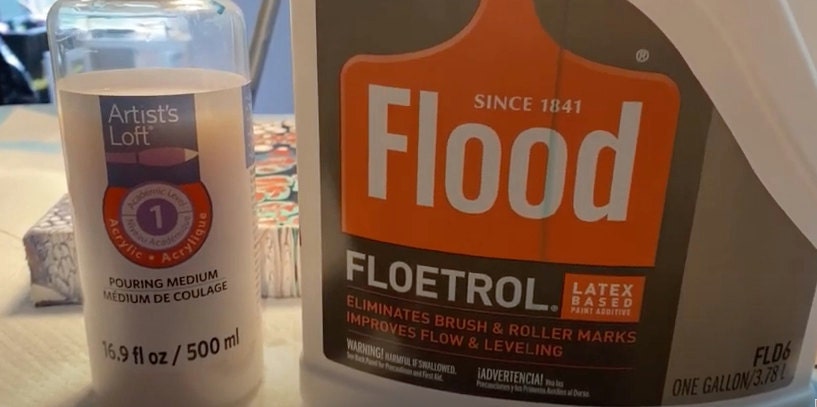What are fluid art cells?
There are many methods for making cells pop up in a fluid art creation. The most basic cells are created simply from air bubbles popping up through the paint. The bubbles carry colors buried lower in the paint column up to the surface, revealing multi-colored cells. In contrast, other cells emerge through chemical reactions or additives to encourage cell growth.

How are pearl cells different?
Pearl cells are created through the reaction of two different kinds of paint resisting each other. A bottom layer of "pearl paint" is laid onto the canvas first and then covered with a top "dump" layer of paint. The "dump" generally has a thinner consistency, allowing the thicker "pearl paint" to pop through.
What makes a pearl cell slightly different from other fluid art cells is that they form AFTER the paint has been stretched. With other cell-creation methods, the cells will develop as the paint pours. As a result, these cells can be distorted as the paint is stretched over the canvas. However, if undisturbed, pearl cells remain relatively round and "pearl-like."

Pearl cell recipe
Just as there are many different ways to create cells, there are also many recipes for making "pearl paint." The following recipe is only one of many options:
Pearl Paint Ingredients-
1 part acrylic paint
1 part US floetrol
1/2 part Artist's Loft Pouring Medium
Dump Paint Ingredients-
1 part acrylic paint
1-2 parts US floetrol
1 part water

Pearl cell painting technique
Lay down a layer of pearl paints, considering how many pearls are intended and where the overall composition requires pearl cells. Then cover all of the pearl paint with the dump paint, stretching it across the entire canvas and allowing the excess to drip off.
With this recipe, the Artist's Loft Pouring Medium resists the watered-down paint/floetrol mix and pops through. Though other professional gloss pouring mediums will also induce cells, the brand Artist's Loft seems to have the most consistent effects. Pearl cells will pop through almost immediately and continue to develop over the next hour.

